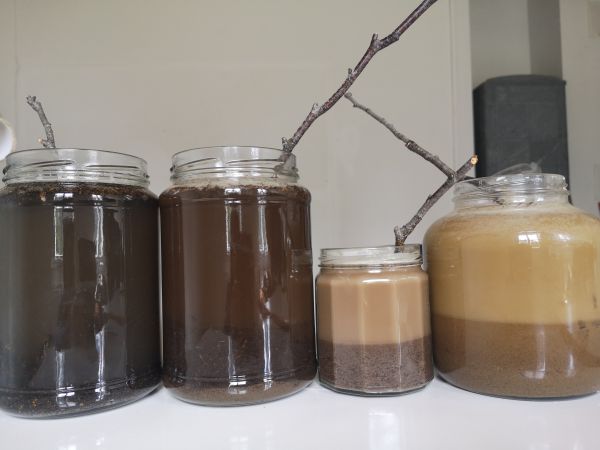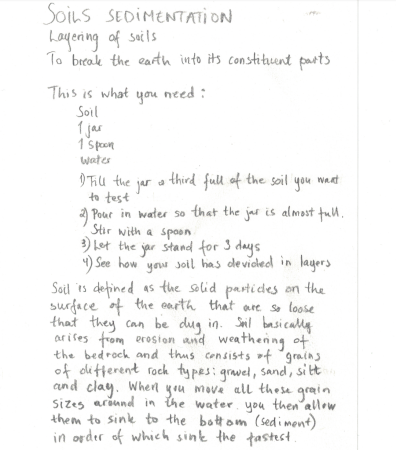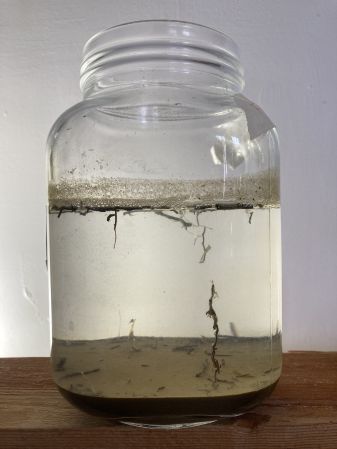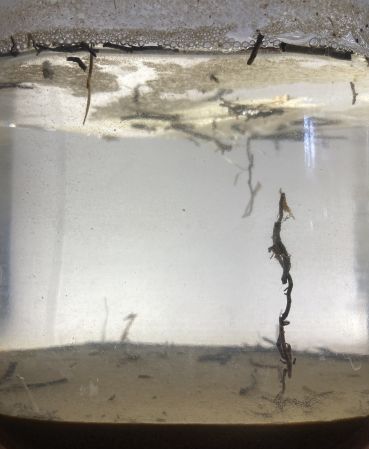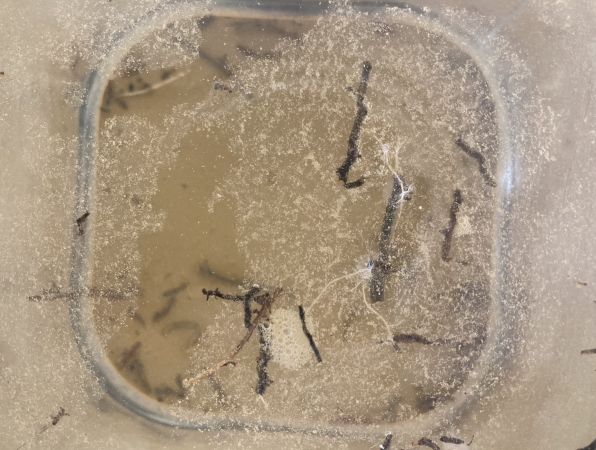Sentient Soils Study: Difference between revisions
No edit summary |
No edit summary |
||
| Line 21: | Line 21: | ||
The container does not preserve the forest - it extends it. It carries a fragment of the particular place that remains responsive and alive. It is both a piece of the place and a narrative. | The container does not preserve the forest - it extends it. It carries a fragment of the particular place that remains responsive and alive. It is both a piece of the place and a narrative. | ||
''Kristin Taarnesvik and Hilde Methi'' | ''Kristin Taarnesvik and Hilde Methi'' | ||
[[Category:Responses]] [[Category:Paljakka]] | [[Category:Responses]] [[Category:Paljakka]] | ||
Latest revision as of 13:48, 17 June 2025
To familiarise yourself with the soils outside where you are walking, you can carry out a simple sedimentation experiment. Place a few spoonfuls of soil in a glass of water and cover with a lid to form a cosmos. Stir first. Biological and geological materials will slightly colour the water inside the glass. The colours range from black and brown to different scales of greys. Mineral particles sink to the bottom and join together in different layers, determined by the density and porosity of each individual part. Light biological components swirl around. When the circles of water have subsided, they slowly settle and become weightless, floating silently.
The container
The container holds a piece of the Finnish forest. It contains fragments of soils, water - and time: materials that resist interpretation through silence, obscurity and movement.
The container functions as an archive. It does not attempt to explain the forest, but offers images of its mineral and temporal textures. The content floats, sinks and settles, changes shape - and unfolds a new sensory knowledge.
The container does not preserve the forest - it extends it. It carries a fragment of the particular place that remains responsive and alive. It is both a piece of the place and a narrative.
Kristin Taarnesvik and Hilde Methi
